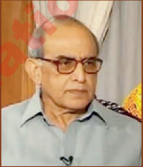
Benazir Bhutto’s Second Regime
Benazir Bhutto’s second term as Prime Minister of Pakistan, from 1993 to 1996, was a period characterized by political transitions, economic challenges, and foreign policy complexities. This article explores the key events, accomplishments, and hurdles faced by Benazir Bhutto during her second tenure in office.
The Return to Power
Benazir Bhutto’s return to power in 1993 marked a historic moment in Pakistan’s political landscape. After being dismissed from her first term as Prime Minister in 1990, Bhutto’s Pakistan People’s Party (PPP) won the general elections held in October 1993. This victory allowed her to once again take on the role of Prime Minister, becoming the first woman in the world to hold the position twice.
Economic Reforms and Stabilization
Upon assuming office for her second term, Bhutto’s government faced numerous economic challenges. Pakistan’s economy was grappling with issues such as inflation, fiscal deficits, and a large external debt burden. In response, Bhutto’s administration implemented a series of economic reforms aimed at stabilizing the economy.
These reforms included measures to control inflation, reduce fiscal deficits, and attract foreign investment. Additionally, her government continued the privatization efforts initiated during her first term, promoting a more open and market-driven economy.
Foreign Policy and Regional Challenges
Benazir Bhutto’s second term saw her actively engage with regional and international dynamics. She worked towards improving relations with India and took significant steps in the direction of a comprehensive peace agreement. The signing of the “Delhi-Lahore Peace Accord” in 1994 was a historic moment in Pakistan-India relations, emphasizing the need for peaceful coexistence.
The Afghan civil war posed a considerable foreign policy challenge during her tenure, as Pakistan had to navigate its relationship with the warring factions and the international community’s interests in the region. Pakistan’s role as a conduit for humanitarian aid to Afghanistan was essential, and Bhutto’s government had to strike a delicate balance between its strategic interests and regional stability.
Challenges and Political Opposition
Despite her achievements, Benazir Bhutto’s second term was not without challenges. Political opposition, especially from Nawaz Sharif’s Pakistan Muslim League (PML-N), was significant. Accusations of corruption and mismanagement persisted, leading to political confrontations and controversies.
Moreover, her government faced criticism regarding its handling of ethnic and sectarian tensions, particularly in the province of Sindh. The management of these issues tested the administration’s ability to maintain law and order while fostering social harmony.
Dismissal and Legacy
In November 1996, President Farooq Leghari dismissed Benazir Bhutto’s government, citing allegations of corruption and misgovernance. This marked the end of her second term as Prime Minister. Subsequently, Pakistan entered a period of political uncertainty and changes in leadership.
Conclusion
Benazir Bhutto’s second regime from 1993 to 1996 was a critical juncture in Pakistan’s political history. Her government’s economic reforms and efforts to promote regional peace stand out as notable accomplishments. However, the challenges posed by political opposition and allegations of corruption remained significant hurdles.
Bhutto’s legacy in Pakistan’s political landscape continued to evolve as she remained a prominent figure in the nation’s politics in the years to come. Her contributions to Pakistan’s political and social development, as well as her pioneering role as the first woman to lead a Muslim-majority country, remain a significant part of her enduring legacy.

